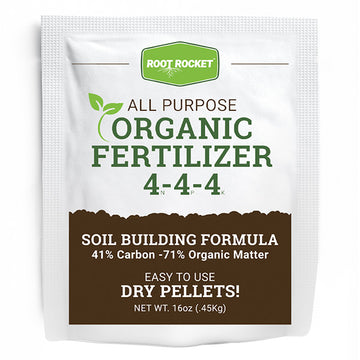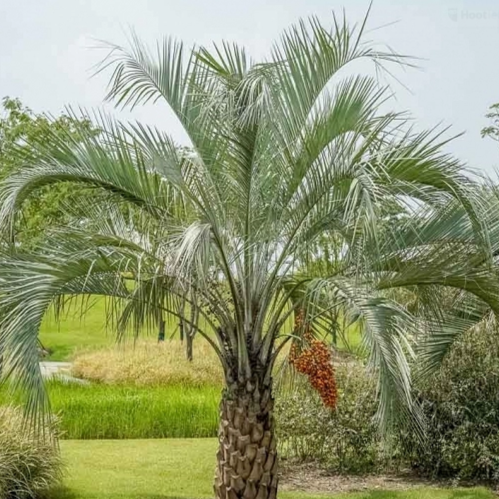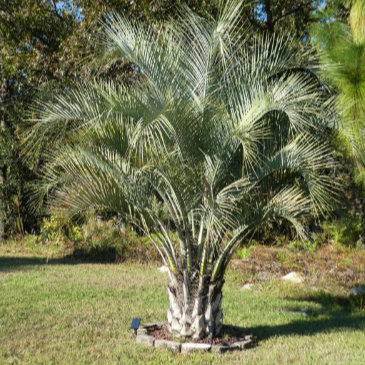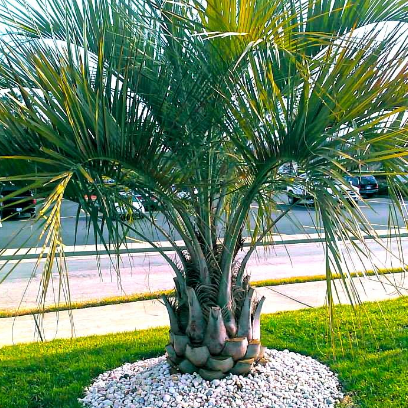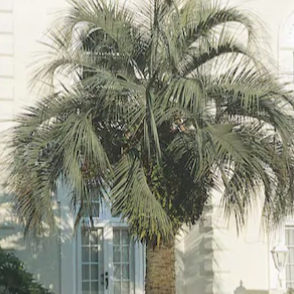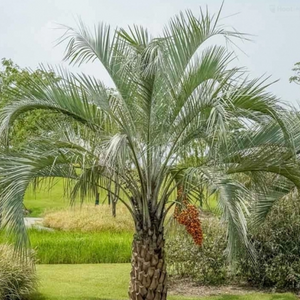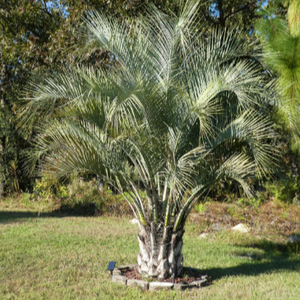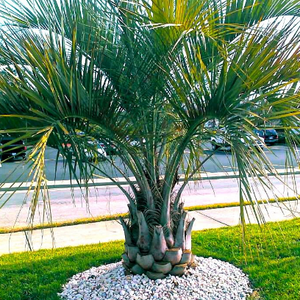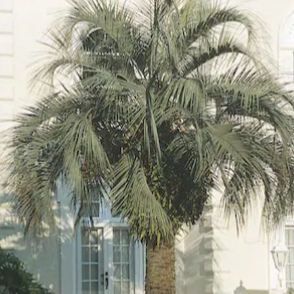Pindo Palm
Product Details
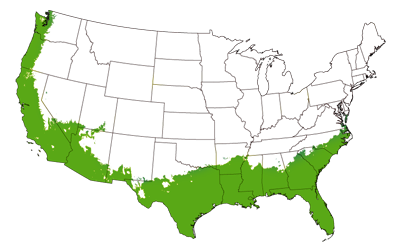 Growing Zones 8-11
Growing Zones 8-11
| Soil Type | Loamy Soil |
| Sunlight | Full |
| Drought Tolerance | Good |
| Mature Height | 15-20 Feet |
| Mature Width | 10-15 Feet |
| Shipping Restriction | AK, AZ, HI |
Striking in its look, the Pindo's feather-leaf, silver-colored fronds (some call it more of a turquoise) produce an exceptional contrast to a typical lawn's color.
These are some of the hardiest palms in South Florida, doing fine in cooler temperatures, blazing sunlight, salty air and dry conditions.
An indigenous plant in some cases called "Jelly Palm," the Pindo Palm generates edible berries that can be made into jelly with a sweet banana/pineapple flavor. The fruits are around 1 inch in size with a seed in the middle. However, just one tree is self-fertile and will produce large bunches of dates every season.
The style of this palm is distinct yet functional. It is often used for smaller lawns, found in moderate coastline homes, an antique Florida bungalow, or dressing up the backyard of a ranch-style residence. Pindo Palms look great in large forest estates, horse ranches or waterside houses as an intense spot in the landscape.
Why Is My Pindo Turning Yellow?
Pests, fungus, or lack of nutrients could be the reason your palm is turning yellow. Fertilize 2 to 3 times between spring and fall. Treat visible insect and fungal issues with recommended insecticide and fungicide applications to maintain a healthy palm.
How Fast Does This Palm Grow?
Expect this palm to be a slow grower to a maturity height of 15-20 feet.
How To Plant A Pindo Palm Tree
Thriving in complete sun on a large selection of soils, including alkaline, this palm is moderately salt-tolerant and can be planted in grow zones 8-10.
Water your Pindo palm when the top 3 inches of soil are completely dry. Water deeply, saturating the soil around the roots to a depth of at least 2 feet. Utilize a yard hose or soaker to water slowly so the water wets the ground in a radius about 4 feet around the base of the trunk. Permit the soil to dry between waterings, as soggy soil might cause the trunk and roots to rot.
Feed the palm 2 or three times between spring and autumn, utilizing a palm fertilizer with a ratio of 8-4-12. Spread the fertilizer equally on the soil under the canopy of the tree, and after that water deeply to prevent scorching. Distribute the fertilizer around the roots. Refer to the fertilizer label for details.
Rinse the palm tree from time to time, using a yard hose with a spray nozzle, this is a fairly easy task. Routine cleaning gets rid of dust, sand and grit that builds up in the leaves as well as stems, which also helps to avoid mites and various other pests that hide in the vegetation.
Prune the Pindo palm to maintain a neat look as needed. While Pindo palms need little pruning, it helps to remove dead, loosened or broken fronds. Do not stress the tree by removing green, healthy fronds. If you feel it is essential to remove healthy fronds, never remove fronds growing horizontally or pointing up.

